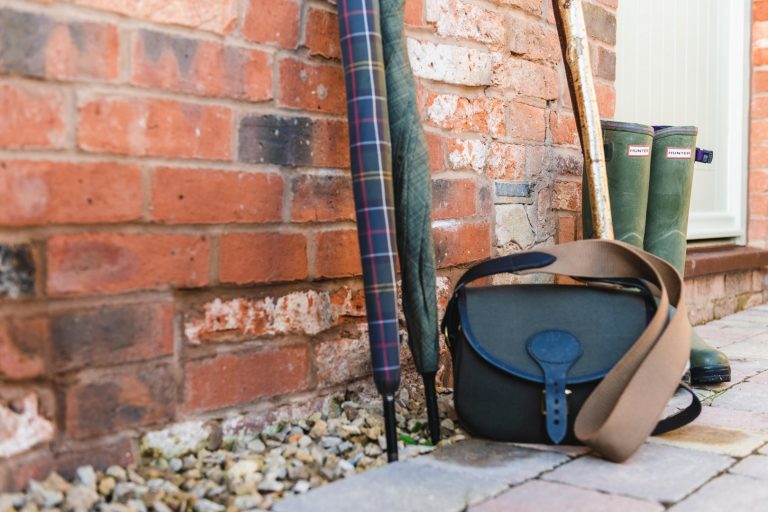

If you’re about to sell a property with a damp problem, tackling it should be a priority. Not only does damp cause a terrible smell sure to put buyers off, it can also cause lasting damage and health issues for those living with it. Our guide to stop damp from spreading will help you tackle it head on.
Rising damp is caused by groundwater finding its way into a home through stone or brickwork and working its way from the ground up. Tackling rising damp can be costly and is bad health if not treated. A course of damp-proofing will help stop rising damp from spreading.
When water works gets into a house through the walls, the roof and floors, it can cause penetrating damp. Typical signs of penetrating damp are growing circles/blotches on walls and ceilings and wet and crumbly plaster. Potential weak spots on the property exterior such as poor pointing or damaged masonry can also be an indication of damp. The solution is to eliminate from the source. Check the sealant on exterior doors and windows, this may need stripping and replacing. Additionally keep an eye for any missing mortar or areas between bricks that may need re pointing.
Condensation is one of the most common forms of damp and its harmful consequences are often overlooked. Condensation can be caused by drying wet clothes indoors, taking a shower and boiling a kettle to name but a few. Bathrooms and kitchens are often most affected so proper ventilation here is essential. To keep condensation at bay, make sure extractor fans are working and all rooms have functioning vents.
An excessive build-up of moisture causes black mould which is difficult to remove. This type of mould is not only unsightly, but attracts mites and, in extreme cases, causes respiratory problems. Mould and mildew eradication kits and cleaning products that contain bleach will help tackle the problem.
If your damp-proof course is defective, one of the first ways in which this will manifest itself is in ‘tide marks’ at the bottom of walls. You need to pinpoint the source of the problem, have the necessary building works done and use a dehumidifier to dry out the room affected.
When guttering is damaged and rainwater is streaming down the side of the property, it will only be a matter of time before the water finds its way into your home. Checking your guttering for blockages and clearing them regularly will help prevent any damp issues from happening.
Drying damp clothing on a clothes-horse in the spare bedroom can cause excess condensation and add to a damp problem. Dry clothes outside whenever possible, or hang them in a well-ventilated room.
Date Posted
February 8, 2019
Article Category
Author
Katy Storer
Share this article:
Keep up to date with the latest advice sent to straight to your inbox

Simply enter your callback request below and a member of the John German team will be in touch shortly to help.
Once you’ve subscribed, the guide will be emailed straight over to you!
Once you’ve subscribed, the guide will be emailed straight over to you!
To receive the latest advice on moving, selling or letting.
You can unsubscribe at any time at the foot of every email.
Simply enter your details below and a member of the John German team will be in touch to arrange your virtual valuation.
Please enter your details below and attach your CV along with a covering letter for our future reference. If a job role becomes available that we think would be great for you, we’ll be in touch.
Simply enter your details below and a member of our team will be in touch shortly to help.
Simply enter your details below and a member of our team will be in touch shortly to arrange this with you.
Please select the type of private valuation you would like and enter your details below. A member of our team will be in touch shortly to help.
Simply enter your details below and a member of our team will be in touch shortly to arrange this with you.
Please fill out some personal details and choose a service to enquire about and we will get back to you with an appropriate response.
Simply enter your details below and a member of the John German team will be in touch shortly to arrange this with you.
Simply enter your details below and a member of our team will be in touch shortly to arrange this with you.
Simply enter your details below and we will start the ball rolling by putting you in touch with Apr Money Limited. A member of our team will be in touch shortly to arrange this with you.
Use our yield calculator to estimate the gross annual rental return on a property.
Use our Stamp Duty Tax calculator to see how much you will have to pay on the purchase of your property.
Our easy-to-use mortgage calculator will give an estimated monthly mortgage cost for your borrowing range.
Simply enter your viewing request below and a member of the John German team will be in touch shortly to help.
Please select the type of survey you would like and enter your details below. A member of our team will be in touch shortly to help.
Choose an enquiry type and fill out some personal details and we will get back to you with an appropriate response.
Please enter your details below and attach your CV along with a covering letter. A member of the team will be in touch shortly.
Simply enter your details below and a member of the John German team will be in touch to arrange your free valuation.
Simply enter your details below. A member of our team will be in touch shortly to find out more about your property search.